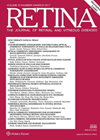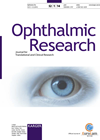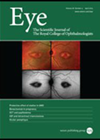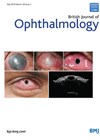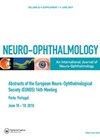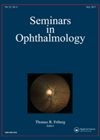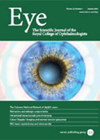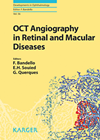You searched for "choroid"
Macular atrophy with aflibercept
1 October 2018
| Saruban Pasu
|
EYE - Vitreo-Retinal
The authors of this paper set out to investigate the prevalence of macular atrophy in treatment-naive patients with neovascular AMD undergoing aflibercept monotherapy (three monthly loading injections followed by subsequent treatment every two months). Case notes over a three year...
Treat and extend for PCV
1 April 2017
| Saruban Pasu
|
EYE - Vitreo-Retinal
This South Korean study investigated the efficacy of a treat and extend regimen (TER) using ranibizumab to treat polypoidal choroidal vasculopathy (PCV). Twenty-nine eyes were included in this retrospective case note review. Of these, five eyes had been treated with...
Fluorescein angiography and OCT in myopic CNV
1 December 2014
| Bheemanagouda Patil
|
EYE - Vitreo-Retinal
Fluorescein angiography (FA) and spectral-domain optical coherence tomography (OCT) are the most common examinations used in the management of anti-VEGF therapy in choroidal neovascularisation (CNV). In comparison to FA, OCT provides a noninvasive evaluation of the macula. Myopic CNV are...
B-scan ultrasonography
1 October 2014
| Nana Theodorou
|
EYE - Vitreo-Retinal
B-scan ultrasonography is commonly employed for the diagnosis and follow-up of ocular trauma. This retrospective study looked at the accuracy and predictive ability of B-scan ultrasonography following open globe repair. Of the 965 patients identified with open globe injuries at...
Features of AMD treatment non-responders
1 October 2019
| Jonathan Chan
|
EYE - Vitreo-Retinal
This is a retrospective consecutive case series of 365 eyes with age-related macular degeneration (AMD) who had three monthly intravitreal aflibercept treatments for at least 12 months. Responders were defined as complete resolution of exudation, intraretinal oedema, subretinal fluid, pigment...
Choroidal vascularity in NAION
1 April 2020
| Claire Howard
|
EYE - Neuro-ophthalmology
The authors present a cross-sectional, non-interventional study of healthy volunteers and those with non-arteritic anterior ischaemic optic neuropathy (NAION) recruited over a six-month period at a single site. NAION is the most common cause of acute optic neuropathy over the...
Two-year results of a T&E aflibercept regime in caucasian PNV
4 October 2023
| Su Young
|
EYE - Vitreo-Retinal
This a retrospective study examining two-year outcomes of patients with pachychoroid neovasculopathy (PNV) treated with a treat and extend (T&E) regimen of intravitreal aflibercept. The mean age was 63.84 ± 7.92 years with nine males (35%) and 17 females (65%)....
Risk of intraocular haemorrhage with new oral anticoagulants
1 December 2017
| Sofia Rokerya
|
EYE - Vitreo-Retinal
The authors conducted a study to assess the risk of intraocular haemorrhage with warfarin dabigatran, rivaroxaban, apixaban. All reported cases of intraocular haemorrhage (vitreous, choroidal, or retinal) with warfarin and new oral anticoagulants (NOACs) (including dabigatran, rivaroxaban, apixaban) from the...
The blue-light hazard – is it true?
Simerdip Kaur takes a look at the latest ophthalmology-related news stories and asks which are based on facts and which are ‘fake news’. Headline: The blue-light hazard – is it true? Blue light is part of the visible optical spectrum...OCT Angiography in Retinal and Macular Diseases
OCT angiography (OCT-A) is based on the concept that in a static eye, the only moving structure in the fundus of the eye is blood flowing through the vessels. This book explains how the technique allows a depth-resolved analysis and...Hot debates in medical retina and imaging: Perspectives from the Controversies in Ophthalmology 2020 virtual conference
Controversies in medical retina and imaging were debated during the Controversies in Ophthalmology 2020 virtual conference held during two mid-day scientific sessions on 27 and 28 March 2020. The author recounts key perspectives and presents viewpoint recommendations from the Vision...Effect of minor trauma in eyes with previously undiagnosed angioid streaks
1 April 2014
| Balini Balasubramaniam
|
EYE - Cataract, EYE - Cornea, EYE - General, EYE - Glaucoma, EYE - Imaging, EYE - Neuro-ophthalmology, EYE - Oculoplastic, EYE - Oncology, EYE - Orbit, EYE - Paediatrics, EYE - Pathology, EYE - Refractive, EYE - Strabismus, EYE - Vitreo-Retinal
Angioid streaks (AS) may be associated with pseudoxanthoma elasticum (PXE), Paget’s disease, haemoglobulinopathies, Ehlers-Danlos Syndrome or abetalipoproteinaemia. Histopathology showed retinal pigment epithelium (RPE) and choriocapillaris loss, elastic fibre degeneration, calcium deposition, active choroidal neovascular membrane (CNVM) and vascular endothelial growth...


